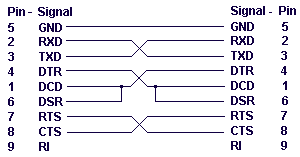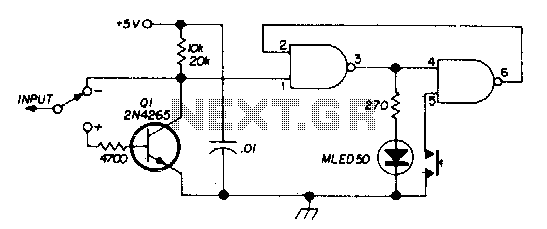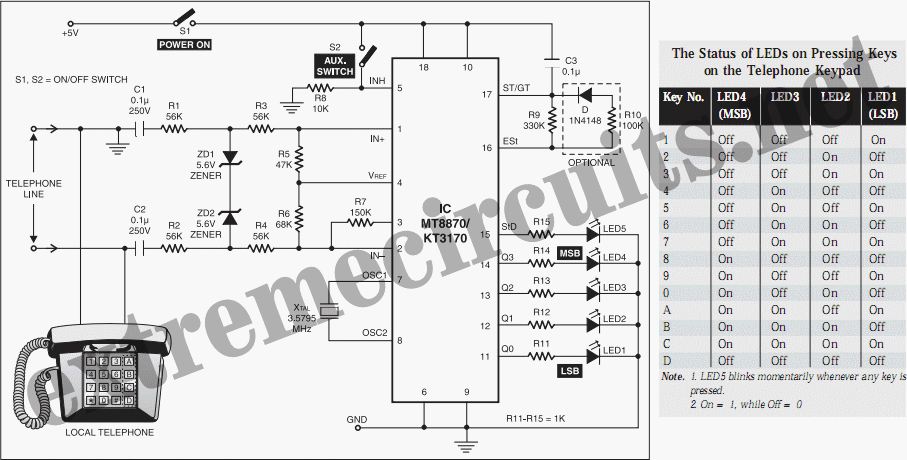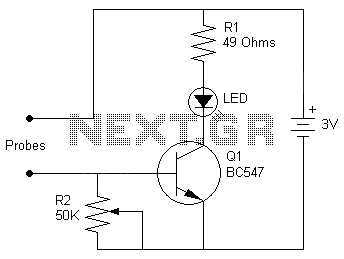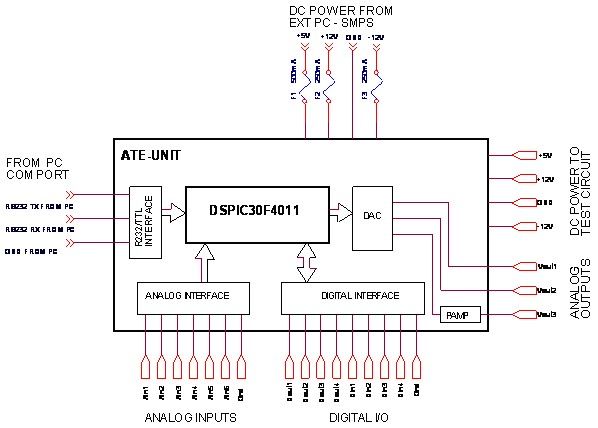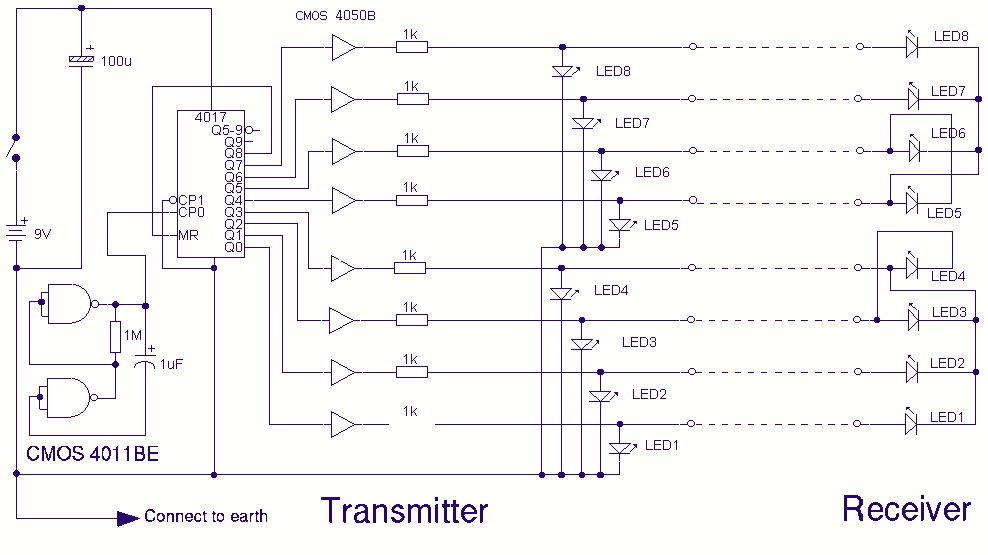
cable test
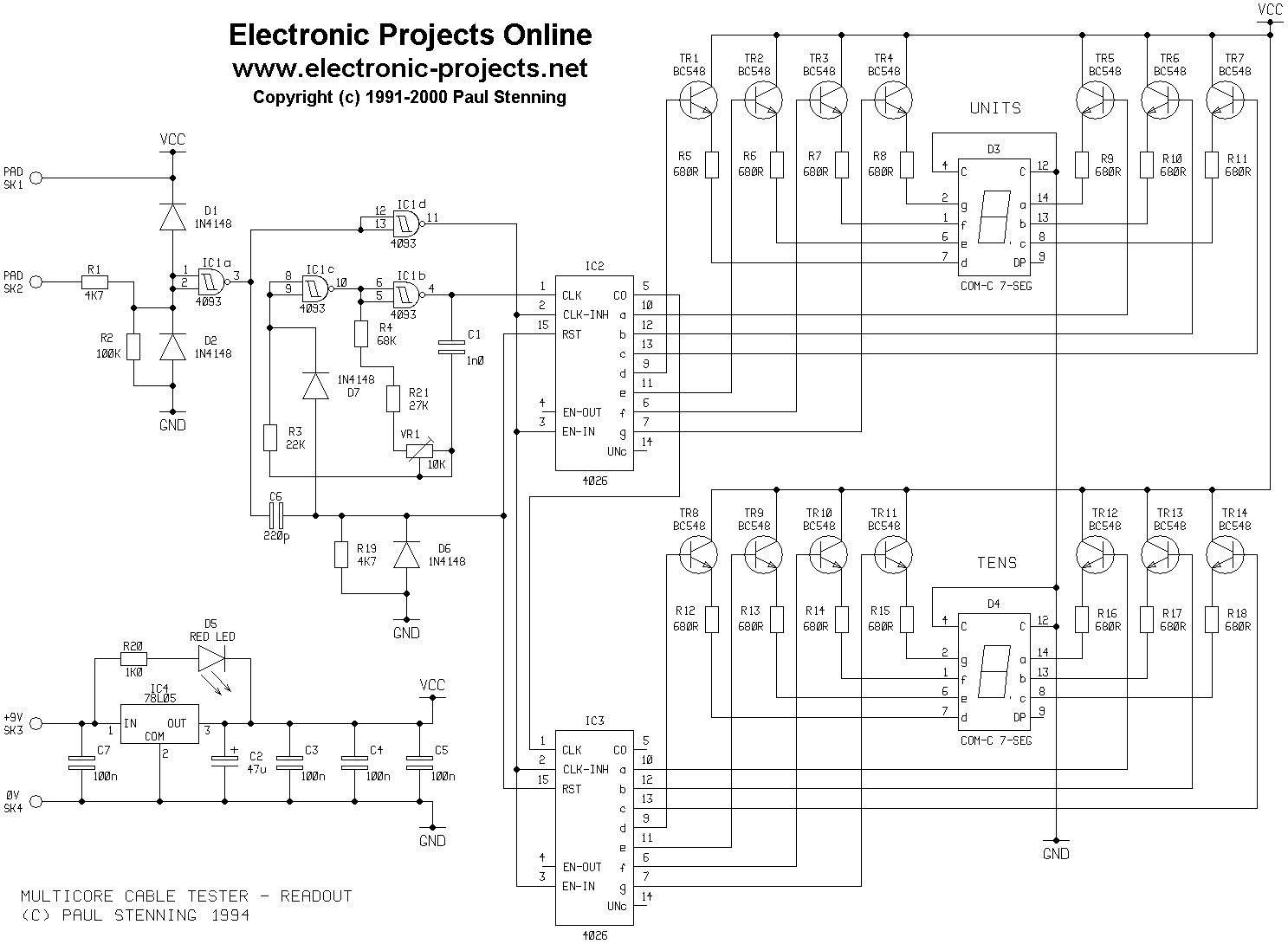
Imagine encountering numerous cable ends that are all identical in color and lack any form of identification. The opposite ends of these cables are located in a different part of the building, making it impossible to determine their connections. A continuity tester could be employed alongside a long wire to extend one of the probe leads. However, if there are fifty wires and a five-minute walk between the ends, tracing them all could consume an entire working day. The Multi-core Cable Tracing System described here aims to simplify this task significantly. The Sender unit connects to up to 64 wires at one end, while the Readout unit indicates the corresponding wire from the other end. The Readout can be connected to any two wires at the far end, displaying the wire number to which the positive lead is attached. Unlike some commercial systems, this design does not necessitate a separate known common connection between the two units. Both units are battery-operated, allowing for use in areas without access to mains power. A red LED on each unit signals that the battery is functional. If the LED fails to light or appears dim, the battery should be replaced. The prototype utilized PP3 batteries, but for regular use, larger capacity 9V batteries, such as six AA cells in a suitable holder, would be preferable. Low-cost 9V plug-in mains adapters could also be utilized. The two-digit seven-segment LED display on the Readout unit is deactivated when not connected to a cable to conserve battery life. This system must never be employed on live cables; both ends of the cables to be traced should be disconnected prior to use. If there is any uncertainty, a test meter should be used for verification. Connecting to live cables could damage the system and pose risks to the operator. Any cable tracing system must transmit a different signal down each wire, which is then identified at the other end. Several systems were evaluated before arriving at the straightforward solution presented here. An analog system using varying voltage levels was dismissed due to its incompatibility with the design's requirement for no specific ground wire between the two units. Noise interference and voltage drops in long cables could also compromise results. A digital coding system was considered, but its complexity was a drawback. A frequency-based system was also ruled out for similar reasons. Ultimately, a system that sends different length pulses along each wire was chosen. The receiver measures the pulse duration to identify the connected wire. This approach is relatively simple and cost-effective. The only potential issue is that the capacitance of long cables may affect pulse shape. By employing logic devices with symmetrical outputs to drive the cable (such as the 74HC series), any distortion in pulse shaping should occur evenly on both the rising and falling edges. This method functions effectively in practice, especially if the receiving device is equipped with a Schmitt trigger input. The clock frequency is relatively low, meaning that significant distortion would be required to impact reading accuracy. For applications involving long cable lengths, it is advisable to use 74AC logic devices for output driving. The 74AC devices offer an output drive of +/- 16mA, compared to +/- 4mA for 74HC devices, making them less susceptible to capacitive loads. However, they are less readily available and typically more expensive, costing two to three times as much as 74HC devices. Only one wire is driven at any given time, which is essential to meet the requirement of not having a common ground wire. All output lines remain high normally, with a low pulse being applied to each wire in succession. The total time taken to cycle through all outputs is crucial for the system's operation.
The Multi-core Cable Tracing System is an innovative solution designed to address the challenges of identifying and tracing multiple cables in complex environments. The Sender unit, capable of connecting to up to 64 wires, utilizes a unique pulse-width modulation technique to differentiate between the wires. This technique ensures that each wire receives a distinct pulse duration, which the Readout unit interprets to indicate the specific wire number.
The design incorporates a user-friendly interface, with the two-digit LED display providing clear visual feedback on the wire being traced. The battery-powered nature of both units enhances portability and convenience, making the system suitable for use in various locations without reliance on mains electricity. The inclusion of a battery status LED serves as a practical feature for maintaining operational readiness.
Safety is a paramount consideration in the design of this system. The explicit warning against using the system on live cables underscores the importance of ensuring that both ends of the cables are disconnected before initiating the tracing process. This precaution not only protects the integrity of the equipment but also safeguards the operator from potential electrical hazards.
The choice of components, such as the 74HC or 74AC logic devices, reflects a careful balance between performance and availability. The decision to utilize a single wire driving method minimizes complexity and enhances reliability, ensuring that the system operates effectively without the need for a common ground.
Overall, the Multi-core Cable Tracing System represents a significant advancement in cable management technology, providing a practical and efficient solution for tracing and identifying multiple cables in a variety of settings.Imagine being faced with a dozen or more cable ends, all the same colour and bearing no identification. The other ends emerge in another part of the building, and you have no way of knowing which is which.
You could use a continuity tester and a long length of wire to extend one of the probe leads. But if you had fifty wires, and a five minute walk from one end to the other, it would take you a good working day just to trace them all through! The Multi-core Cable Tracing System presented here is designed to make this sort job less of a nightmare! The Sender unit is connected to up to 64 wires at one end, and then the Readout unit is used to indicate which is which from the other end.
The Readout is simply connected to any two wires at the other end, and the display indicates which wire number the positive lead is connected to. Unlike some commercial systems, this system does not require a separate known common connection between the two units.
The two units are both battery powered, allowing them to be used in situations where mains power is not readily available. A red LED on each unit indicated that the battery is OK. If the LED does not light or is very faint, the battery should be replaced. PP3 batteries were used in the prototype, but for more regular use larger capacity 9V batteries would be a better choice, for example six AA cells in a suitable holder.
Low cost 9V plug-in mains adaptors could also be used. The 2 digit seven segment LED display on the readout unit is blanked whenever it is not connected to a cable, to conserve battery life. This system must never be used on live cables. Ensure both ends of the cables to be traced are disconnected before using this system. If in any doubt, check with a test meter. Connection to live cables will cause damage to this system, and could endanger the operator. With any cable tracing system, a different signal must be sent down each wire. The signal is then identified at the other end. Several systems were considered before deciding on the simple solution used here. An analogue system using differing voltage levels were ruled out, primarily because it would not work with my plan of having no specific ground wire between the two halves of the system.
Noise pickup and voltage drops in long cables could also affect the results. I then considered a digital coding system, where a different serial code is sent down each wire. Although this would work well, it would result in a rather complex design. A system using differing frequencies was also considered, but again ruled out for reasons of complexity. I finally settled on a system that sends different length pulses along each wire. The receiver simply has to measure the pulse duration to determine which wire it is connected to. This has the advantage of being relatively straightforward and cheap. The only potential problem is that the capacitance of long cables might affect the pulse shape. By using logic devices with symmetrical outputs to drive the cable (74HC series logic), any pulse shaping distortion should occur equally on the rising and falling edges.
This works well in practice, providing the receiving device has a Schmitt trigger input. The clock frequency is fairly low, so any distortion in the pulse shape would have to fairly severe before the reading accuracy would be affected. If use with long cable lengths is likely, I would suggest using 74AC logic devices for the output drive.
74AC devices have an output drive of +/- 16mA compared to +/- 4mA for 74HC, so they should be less affected by capacitive loads. However they are not so readily available, and are typically two or three times the price of 74HC devices.
Only one wire is driven at a time. This is necessary to fulfill the requirement of not having a common ground wire. All output lines are normally high, and a low pulse appears on each wire in turn. The total time taken to cycle round all outputs is 🔗 External reference
The Multi-core Cable Tracing System is an innovative solution designed to address the challenges of identifying and tracing multiple cables in complex environments. The Sender unit, capable of connecting to up to 64 wires, utilizes a unique pulse-width modulation technique to differentiate between the wires. This technique ensures that each wire receives a distinct pulse duration, which the Readout unit interprets to indicate the specific wire number.
The design incorporates a user-friendly interface, with the two-digit LED display providing clear visual feedback on the wire being traced. The battery-powered nature of both units enhances portability and convenience, making the system suitable for use in various locations without reliance on mains electricity. The inclusion of a battery status LED serves as a practical feature for maintaining operational readiness.
Safety is a paramount consideration in the design of this system. The explicit warning against using the system on live cables underscores the importance of ensuring that both ends of the cables are disconnected before initiating the tracing process. This precaution not only protects the integrity of the equipment but also safeguards the operator from potential electrical hazards.
The choice of components, such as the 74HC or 74AC logic devices, reflects a careful balance between performance and availability. The decision to utilize a single wire driving method minimizes complexity and enhances reliability, ensuring that the system operates effectively without the need for a common ground.
Overall, the Multi-core Cable Tracing System represents a significant advancement in cable management technology, providing a practical and efficient solution for tracing and identifying multiple cables in a variety of settings.Imagine being faced with a dozen or more cable ends, all the same colour and bearing no identification. The other ends emerge in another part of the building, and you have no way of knowing which is which.
You could use a continuity tester and a long length of wire to extend one of the probe leads. But if you had fifty wires, and a five minute walk from one end to the other, it would take you a good working day just to trace them all through! The Multi-core Cable Tracing System presented here is designed to make this sort job less of a nightmare! The Sender unit is connected to up to 64 wires at one end, and then the Readout unit is used to indicate which is which from the other end.
The Readout is simply connected to any two wires at the other end, and the display indicates which wire number the positive lead is connected to. Unlike some commercial systems, this system does not require a separate known common connection between the two units.
The two units are both battery powered, allowing them to be used in situations where mains power is not readily available. A red LED on each unit indicated that the battery is OK. If the LED does not light or is very faint, the battery should be replaced. PP3 batteries were used in the prototype, but for more regular use larger capacity 9V batteries would be a better choice, for example six AA cells in a suitable holder.
Low cost 9V plug-in mains adaptors could also be used. The 2 digit seven segment LED display on the readout unit is blanked whenever it is not connected to a cable, to conserve battery life. This system must never be used on live cables. Ensure both ends of the cables to be traced are disconnected before using this system. If in any doubt, check with a test meter. Connection to live cables will cause damage to this system, and could endanger the operator. With any cable tracing system, a different signal must be sent down each wire. The signal is then identified at the other end. Several systems were considered before deciding on the simple solution used here. An analogue system using differing voltage levels were ruled out, primarily because it would not work with my plan of having no specific ground wire between the two halves of the system.
Noise pickup and voltage drops in long cables could also affect the results. I then considered a digital coding system, where a different serial code is sent down each wire. Although this would work well, it would result in a rather complex design. A system using differing frequencies was also considered, but again ruled out for reasons of complexity. I finally settled on a system that sends different length pulses along each wire. The receiver simply has to measure the pulse duration to determine which wire it is connected to. This has the advantage of being relatively straightforward and cheap. The only potential problem is that the capacitance of long cables might affect the pulse shape. By using logic devices with symmetrical outputs to drive the cable (74HC series logic), any pulse shaping distortion should occur equally on the rising and falling edges.
This works well in practice, providing the receiving device has a Schmitt trigger input. The clock frequency is fairly low, so any distortion in the pulse shape would have to fairly severe before the reading accuracy would be affected. If use with long cable lengths is likely, I would suggest using 74AC logic devices for the output drive.
74AC devices have an output drive of +/- 16mA compared to +/- 4mA for 74HC, so they should be less affected by capacitive loads. However they are not so readily available, and are typically two or three times the price of 74HC devices.
Only one wire is driven at a time. This is necessary to fulfill the requirement of not having a common ground wire. All output lines are normally high, and a low pulse appears on each wire in turn. The total time taken to cycle round all outputs is 🔗 External reference
